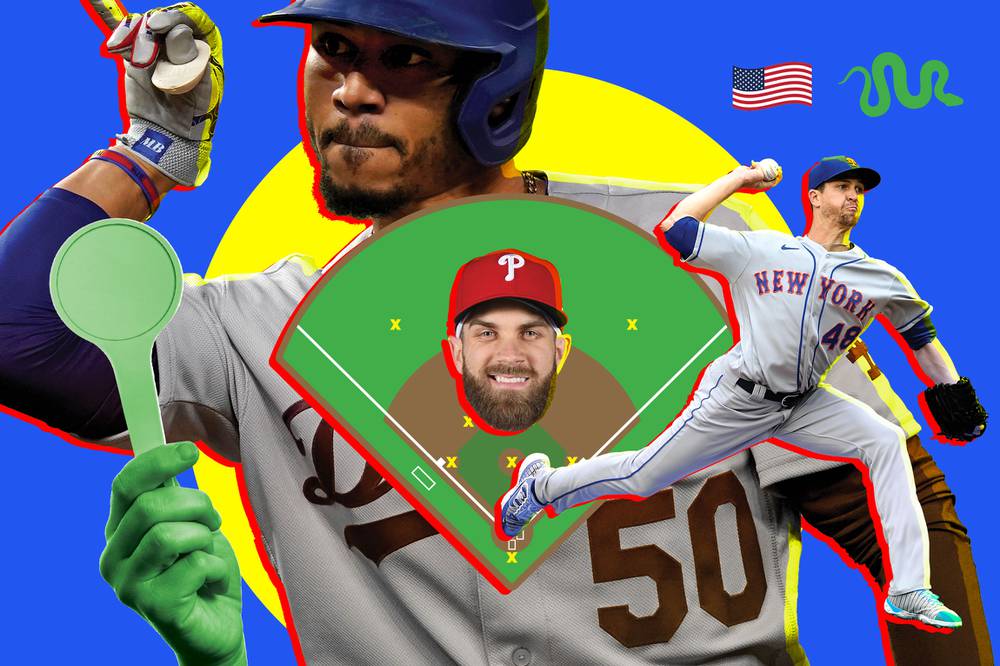Even if you don’t play fantasy football yourself, you surely know folks who do. Estimates put the number of Americans who play fantasy football each season at more than 40 million, which means you probably have co-workers, friends and family members participating in what has grown into a multibillion-dollar annual industry. But fantasy baseball? That’s further out on the fringe, mostly because it requires more time and effort than its gridiron counterpart. NFL squads play 16 regular-season games over the course of four months; MLB teams normally rack up 162 games spanning half a calendar year. Which is to say, fantasy baseball isn’t recommended for the casual player. If you’ve got the interest and the energy, however, it can be highly rewarding—a welcome daily distraction and a way to combine your sports and game-playing acumen. Intrigued? There’s still time to join a league, or create one yourself, before April 1, baseball’s opening day.
WHAT IS IT?
As with most other fantasy sports, participants (also known as managers or owners) form teams comprising real-life athletes, and then compete based on the combined statistical accomplishments of those players—often with prize money at stake.
Founding Father
Daniel Okrent, the first public editor of The New York Times, invented Rotisserie League Baseball—considered by many to be the game’s purest version—in 1979. It drew its name from the site of an initial meeting on the topic with friends, Manhattan’s La Rôtisserie Française restaurant.
PRIMARY FORMATS
Rotisserie Casually known as Roto, this longtime version uses statistical categories to award points. If a league has 10 managers, the one whose team compiles the most home runs over the course of the season receives 10 points toward his or her total; the team in second place receives nine points, and on down. Traditional Rotisserie leagues utilize either four (batting average, home runs, RBIs and stolen bases) or five (those plus runs) hitting categories and four (wins, saves, ERA and WHIP) or five (those four plus strikeouts) pitching categories, though some leagues have shifted toward more modern categories such as on-base percentage, slugging percentage, quality starts and holds.
Head-to-Head (points) More similar to traditional fantasy football, in that managers go head-to-head for a week at a time, with wins and losses awarded to determine seasonlong standings. Points are gained and lost throughout the week based on players’ statistical achievements—hits, runs, total bases, RBIs, innings pitched, baserunners allowed, strikeouts and so forth—
to determine each matchup’s winner and loser.
Head-to-Head (categories) A hybrid of Roto and Head-to-Head (points), it runs weeklong matchups between managers and awards wins and losses based not on total points, but within a group of categories. Head-to-head leagues can be better for keeping managers interested throughout the season; in Rotisserie leagues, attention might fade once a team falls too far behind in too many categories to contend.
THE DRAFT
There are two primary ways teams select their players:
• Snake draft: Managers are randomly assigned positions for Round 1 (1-10 in a 10-team league). Round 2 heads back in reverse order (10-1), then back for Round 3 (1-10) and so on until rosters are filled. Pro: It’s quicker. Con: Managers can only choose between the players available when they select.
• Auction/Salary Cap draft: Managers have a certain amount of (fake) money—typically $260—to spend on their entire roster, with a required minimum of $1 per player. Pro: Every player is technically available to every manager. Con: It typically takes far longer to complete.
Positions
• Rosters usually comprise some combination of the following positions: catcher, first baseman, second baseman, third baseman, shortstop, outfielder and pitcher.
• Most leagues also utilize hybrid positions, such as corner infielder (a first or third baseman), middle infielder (a second baseman or shortstop) and utility player (any non-pitcher).
• Some leagues divide their outfielders by position (left, center, right) and their pitchers by role (starter, reliever).
• The most traditional starting roster configuration is: two catchers, first baseman, second baseman, third baseman, shortstop, corner infielder, middle infielder, five outfielders, utility player, nine pitchers.
• Some leagues utilize bench spots (players’ stats don’t count on days when they aren’t in the starting lineup) and injured list slots on their rosters.
“ONLY” LEAGUES
Though most fantasy baseball leagues draw players from the full Major League Baseball universe, some opt to up the challenge by limiting the pool to either just the American League or National League. In such a league, it’s generally far tougher to find quality players available for pickup after the draft. “Only” leagues also must determine rules for when existing players depart and new ones enter that league through real-life MLB trades.
KEEPERS
Though many leagues redraft from scratch at the start of each season, some allow managers to carry a portion of their rosters over to the following season. Those players are known as keepers. In auction leagues, players’ draft prices can become their salaries for the following season, which are then subtracted from their managers’ total draft budget. Keeper leagues also sometimes employ contracts—limiting the number of years a manager can keep a player—and/or prospects, i.e., minor league, college or other players who have yet to reach the major leagues.
WHERE TO PLAY
Unless someone in your league has infinite free time to tabulate statistics and handle daily transactions, you’ll need an online hosting site to do that for you. Some of the most popular, free options are:
• CBSSports.com
• ESPN.com
• Fantrax.com
• Yahoo.com
TOP PICKS
According to ESPN.com, the top-ranked fantasy players for Roto leagues heading into the 2021 season are …
Hitters
1. Mookie Betts, OF, Dodgers
2. Ronald Acuña Jr., OF, Braves
3. Fernando Tatís Jr., SS, Padres
4. Juan Soto, OF, Nationals
5. Trea Turner, SS, Nationals
6. Mike Trout, OF, Angels
7. Trevor Story, SS, Rockies
8. Jose Ramirez, 3B, Indians
9. Freddie Freeman, 1B, Braves
10. Christian Yelich, OF, Brewers
Pitchers
1. Jacob deGrom, Mets
2. Gerrit Cole, Yankees
3. Shane Bieber, Indians
4. Yu Darvish, Padres
5. Trevor Bauer, Dodgers
And if you’re curious where some of Las Vegas’ top products rank …
16. Bryce Harper, OF, Phillies (Las Vegas High/CSN)
95. Kris Bryant, 3B, Cubs (Bonanza High)
104. Joey Gallo, OF, Rangers (Bishop Gorman High)
116. Tommy Pham, OF, Padres (Durango High)





